
How to see who is going to your website
Good news: you CAN see who is going to your website – at least, to the level of a business name or the residential area that the visitor came from.
Within this page we’re focusing on different types of website visitors and how much you can identify about them.
Here are the topics we’ll be covering:
How you can identify visitors to your website
Most of your website visitors can be loosely identified in one of two ways:
- IP address
- Geolocation
For website visitors identified in those ways, you can track:
- What source brought them to your website (e.g. Google Ads)
- What page they landed on
- What they looked at page by page (and for how long on each page)
A1WebStats customers have a piece of code on their websites, which helps to identify visitors both by IP address and geolocation.
This works as detailed in each of the three descriptions that follow …
IP address identification of website visitors
When someone goes to your website, they will be identifiable by an IP address.
That IP address may be easy to link to an identifiable business, as you can see in the example from A1WebStats below, which shows the page by page views of the person who came from that company:
This view shows one of the IP addresses associated with that company:
However, the majority of visitors to a website will NOT be identifiable as a company via their IP address. This is for one or more of these reasons:
- The company is not set up in a way that they can be identified.
- The website visitor may be on a mobile device at the business location, but not connected to the company network (this is becoming increasingly more common).
- The website visitor may be at a different location (e.g. working from home, at a hotel, or anywhere else).
As an example, look at this visit to a website that offers data centre hosting:
There was nothing to identify that visitor by anything other than ‘IP Pools’ but it’s safe to assume that they were a business person (because the website wouldn’t be attracting interest from anyone not interested in what they offer).
Using IP address matching to identify companies that visit your website will typically get a match rate of 5-25%
That’s quite a large range because it does vary depending on the website and type of industry that they’re in. Here at A1WebStats, we see the level of companies identifiable by IP address averages in the range of 10-18%
Geolocation identification of website visitors
Geolocation is a feature of A1WebStats that helps to identify website visitors by their specific location. This shows a combination of partial address plus postcode/zip code.
This is useful for identifying both:
- People at businesses that can’t otherwise be tracked by IP address
- People at residential locations
Identifying businesses by geolocation
Most businesses can’t be identified by their IP address.
For example, this website visitor couldn’t be identified as a company by IP address, but they could be identified by their geolocation – DH8 6ST:
Geolocation is sometimes very accurate but also sometimes not so precise, depending on the internet provider and whether using a mobile or desktop device.
Here’s what we found when we searched Google for the DH8 6ST postcode above, showing businesses in that area:
In this case, there was only one business, but normally there would be multiple businesses in that area.
When there are multiple businesses in an area, we don’t know for sure WHICH business visited the website, but you can normally eliminate some as being not the types of businesses that would be interested in what they saw on your website.
In such a scenario, you would normally contact any companies in that geolocated area, knowing that one of them was interested in what you offer.
Identifying residential locations by geolocation
This is more useful in a B2C context and, while not perfect, can help significantly.
In the example below, the person has visited the website from their geolocation of CT7 9EZ:
Looking up that postcode area, there are no businesses listed, but there are residential properties. Although the data shows one specific property (27 Spencer Road), it’s not necessarily that one, but is definitely one that’s been linked to that postcode:
What this tells us is that someone from CT7 9EZ, which would be one of 13 residential properties in that area, was interested in mortgages.
In this case, it would probably be worth the mortgage broker putting information packs through each house in that postcode area, knowing that one of them is interested. This is even more useful when you know which specific service or product pages people visited while on your website.
The viability of this does of course depend on the number of properties in that area, plus whether there are postage costs. However, it’s very much worth experimenting with if the purchase value of the product/service (including the lifetime customer value if repeat purchases are possible) far outweighs the cost of targeting by letterbox.
There are also some combinations of geolocated data that work better than others. An example in the UK would be someone who uses Virgin Media as a provider, visiting a website while at home:
In that case it’s highly likely that the address shown is very accurate (or a residential property directly either side).
Accuracy depends on the internet provider and device used. Sometimes it’s better than others, but most of the time we see that the postcode is very accurate.
Where geolocation is not so useful
Can you identify the actual person who visited a website?
There are a few ways that you could identify the actual person who visited your website:
- They were in your database already, so you could track when they visit your website (via the functionality of your CRM/marketing system) – if your system has that functionality.
- They entered some details in a live chat.
- They completed an enquiry form or made contact, which means that you could cross-reference that to their actual visit.
Apart from those methods there is no service or software that can tell you who the person was (apart from using an incredibly complex system that utilises several data points of IP address, cookies, browser, email, and more).
Is it legal to identify visitors to your website?
The short answer is: yes.
GDPR has resulted in a lot of confusion about what’s legal or not legal about tracking visitors to websites.
Most specifically: the difference between data that is personal and data that is not.
GDPR relates to personal data that relates to individuals that visit your website, not businesses.
Identifying a business that has been to your website, and following up on that, falls within what’s called legitimate interest. This means that when a company visits your website then they have a legitimate interest in what you offer.
We have heard of people who have said: “GDPR says that you can’t contact me”.
Those people are wrong if they work within a business. Someone (maybe not them) from that business has shown a legitimate interest by going to the website of the company, which means that you can contact them.
But what about residential visitors?
In the part of this page that covers following up on residential locations that visited your website, you can see the specific steps that you can take to reach out to residential visitors that have been to your website.
But is this legal?
Let’s see what happens from a GDPR perspective:
Someone has visited your website and they can be identified by AN address and postcode/zip code.
This does not mean that it was that specific property that visited your website – it could be any property within that area.
This means that, from a tracking perspective, you don’t know for sure which property visited your website and you certainly don’t know which person within that property either.
This means that you haven’t identified an individual person.
Let’s say you chose to do this:
- Choose one property in that area.
- Write to someone at that property, telling them that you saw them go to your website and look at various pages.
- Offer them your service or product.
That would be a mistake because:
- You don’t know for sure that any one property visited your website – you only know it was one in the area.
- The person may have heard about GDPR and decides that they are going to report you for tracking them, even if they hadn’t actually been to your website in the first place because you picked the wrong address.
It’s far better to use any mail communications as a general introduction – as if you are sending the same thing to many households. That way it would appear as a coincidence that someone had been to your website and received something in the post shortly afterwards.
How will you follow up on website visitors you’ve identified?
If you have identified (via IP address or geolocation) a visitor to your website, then you will have one of:
- One or more businesses in that geographical area
- A range of residential properties in that geographical area
What you do next depends on whether it’s a business or residential location that has visited your website …
Following up on businesses that visited your website
Every business has their own methods but here are a range of options (each of which is covered in more detail on our page https://a1webstats.com/knowledge-centre/b2b-sales/how-to-contact-companies-that-have-visited-your-website) …
Looking a company up on LinkedIn will lead to a view of employees that you can then filter down to the type of person most likely to be interested in your products or services.
If you have the paid versions of LinkedIn then it will be easier to filter those people down according to what you want, but the free version also has filters that will help.
With names of people, you can reach out in a range of ways, including:
- Connection request
- InMail
Making a connection request will be a slower path because people will instantly be defensive when they see they are being contacted by someone who probably wants to sell something to them.
InMail allows you more text to explain your reason for contact. This is the type of text you could use:
“Hello [their name],
It probably wasn’t you personally, but we picked up that someone from [your company name] came to our website [website name] on [date] and looked at our pages about [details here].
Would you know who that could have been, as I’d be interested in talking to them?
Thank you in anticipation that you can help
[Your name]”
If your sales cycle is longer-term, you could also identify people within each business and engage with their posts/comments on LinkedIn, providing an opportunity to open up a conversation at the appropriate time.
Overall, LinkedIn is most useful in identifying a range of people who you could then contact in other ways such as telephone, email, or printed mail.
Telephone
If you have an idea of who to call then you can ring that company that visited, trying to get put through to that person.
It’s likely that you will be confronted with a gatekeeper, so you would ideally have the name of the person you’d like to be put through to.
Having got through to the person, you still don’t know for sure it was them who visited your website, so you may use words similar to this:
Good Morning/Afternoon [Name of person], I’m [Name] from [Company] and, being a proactive company, we identified that someone from [their company name] visited our website yesterday. I took a guess that it may have been you but could equally have got it completely wrong! Just for information, the visitor seemed to be mainly interested in [give details of the products/services they seemed interested in].
At this point there’s a natural pause for the person in the company to consider what you’ve said and what you offer. If it wasn’t them, then they may be able to pass you onto someone else that it could have been, or supply you with an email address to send through an introductory email.
It’s not uncommon for people within companies to completely deny that anyone from that business would have been visiting your website. This is sometimes defensive (they don’t want to admit it) and sometimes is just being unaware that someone else within the business would have been visiting your website. The larger the company, the more likely that people don’t communicate well with each other.
If you have an email address for the person (or have used a service such as Hunter.io to find out their likely email address) then you could email that person (or people).
That email could be similar to the message used to reach out via LinkedIn InMail (but obviously, you could expand further on that).
Another method that can be successful is to create a video email (e.g. via a service such as Loom), where you’re showing the person that you’ve identified someone from that company has been to your website, that you recognise it may not have been them personally, but that you’d appreciate it if they could pass the video email onto someone who may be interested in what you offer.
Printed Mail
In a world where emails get ignored and phone calls get blocked, going back to the old methods can sometimes work.
If you know a company has been to your website, including what they looked at page by page, then you could write a letter to someone you’ve identified within that company.
That person probably doesn’t receive much post and so your letter will stand out to them – particularly if sent in a brightly coloured hand-written envelope, with your genuine signature on the end of the letter.
The letter content could focus on how you saw someone from their business went to your website, but didn’t make contact, and you feel that there may have been something missing in the website experience, and you’d be happy to fill in any gaps.
That’s just one angle – everyone will have their own.
Something that we’ve seen is quite effective is to include within the letter a screenshot of the visit from that company, just to demonstrate that you’re not mass producing letters to everyone.
Other methods of contacting people in companies
The methods you use, and effort/budget you put in will very much depend on the potential lifetime value of the potential customer from the company that you know has been to your website.
We’ve seen a range of strategies employed, including:
- Lumpy mail – sending one or more larger items to the recipient company, grabbing their attention. An example of this was a brick company who sent Billy Brick, Betty Brick, and various child bricks to the builders that they knew had been to their website. Lumpy mail can range from a one-off lumpy mail piece through to an elaborate campaign designed to grab attention.
- Combining options into a sequence – starting with a LinkedIn message, evolving to a phone call, then a letter, then something else. Being persistent to grab attention but without appearing pushy.
- Video cards – these can be costly but are effectively a screen that automatically plays a video that you’ve personally recorded to the recipient. Arriving as a thick envelope, the recipient opens the card to then have your bespoke message played to them.
Why don’t more businesses use methods such as those above?
It’s purely related to lack of vision and commitment to stand out above what everyone else is doing.
For most businesses the formula should be simple:
-
- Identify the company
- Calculate the potential lifetime value of that company if they became a customer
- Identify relevant people within the company
- Try simple methods to reach out initially
- Focus on whoever is responsive
- Use innovative strategies to wow that person, setting an allowance of how much you’re prepared to spend (in budget and time) to win that customer.
Following up on residential locations that visited your website
A1WebStats has an option (that can be switched on or off) that tracks visitors by geolocation instead of just IP address.
Normally that’s used to identify businesses that can’t be identified by IP address.
However, customers who focus on B2C are more interested in which properties have been visiting them.
Reality is that geolocation provides an approximate picture of who visited a website. Yes, it’s accurate to the street/postcode level, but the system does not usually know which specific property visited the website.
Here’s an example of a website visitor from a specific area:
That image shows someone who visited a website in the evening and so were most likely from a residential location.
Although the data shows an address line of 63 Alyth Road, it is just an approximation. In this case, the person visited from a mobile phone and so we do know for sure that the postcode itself is accurate.
It could still be any one of these properties though:
This is the follow up process that you could go through for that example above (the same would apply if there were more properties in the area) …
- Someone visits your website and they have been geolocated to an address/postcode area.
- There are five houses in that area.
- We don’t know which house the visit came from (although it’s often close to the address shown in the data).
- A generically addressed (as if a general mailshot) printed pack of information is mailed out to each house within that postcode, introducing your service or product.
- One of the households that picks up that pack will have someone there who had an interest in what you offer.
- If the person who went to your website also sees the information pack then it gives more opportunity for them to absorb what you offer. They are unlikely to realise that the pack was sent to their house as a result of going to your website.
- If the pack is effective enough, then some of those recipients will make contact with you.
Whether this is worth it to you depends on the lifetime value of a customer.
If, for example, it cost you £3 per pack sendout and you send to 10 houses, that’s a cost of £30. If a potential customer is worth £hundreds or £thousands to you over their lifetime value then that’s a small cost to pay, even if you don’t get a response from all areas you send the mailout to. It’s certainly worth experimenting with to see what results you get, and it’s likely that few of your competitors are using website visitors data in such an intelligent way.
Other methods of identifying visitors to your website
Hubspot (and similar)
Marketing automation platforms such as Hubspot are useful in their own way and yes, can provide you with insights into specific people on your website.
But here’s the catch:
To identify a person, they have to already be within the system (e.g. Hubspot).
So, if David Jones from ABC Co has been to your website and has completed a form, which puts them into your Hubspot database, he will then be identifiable whenever he returns to your website in the future.
That’s great if you have a process that captures contact details of people to your website, but won’t help you if people on your website take no action.
Taking 100 visitors to a website that has something that they can sign up for, if 10 people take that action then those people will be identifiable if they come back to the website in the future.
But the other 90 visitors won’t be identifiable in any way.
The websites that do well out of marketing automation systems such as Hubspot and similar … are those that work hard on capturing details from as many people as possible.
Many would say that websites should focus more on creating methods to get the contact details of visitors, which makes it easier to identify them if they return in the future. We agree. However, anyone who visits a website and doesn’t provide their details (which will be the majority), would need to be identified in other ways.
Google Analytics RIP
Until 2020, it was possible to see these two dimensions:
- Service Provider
- Network Domain
They’re now not available (they show as ‘not set’ in Google Analytics) but to be honest, they were weak in the first place.
All they would show was a vague picture of visits from identifiable or unidentifiable domains, and there was nothing of the sophistication that A1WebStats supplies.
Conclusion
When you want to see who is going to your website, a hybrid approach will give you most results.
If you have a marketing automation/CRM platform (e.g. Hubspot) then you will achieve a very strong picture of the website movements of those who have signed up with you.
That’s great, and very positive, but it doesn’t account for all those people who haven’t given you their contact details, and so can’t be tracked within such systems.
That’s where systems such as A1WebStats become a useful addition to the website intelligence mix (and can be experimented with via our 30 day free trial) because you will then be able to identify:
- Companies identifiable by IP addresses (this ranges from 5-25% of your visitors identifiable, depending on your website and types of traffic).
- Companies or residential properties identifiable by geolocation (this ranges from 10-28% of your visitors identifiable).
What’s important though is for you to have a system to follow up with those that you can identify as having visited your website.
Although A1WebStats is low-cost, you should still expect to turn that cost into business (by following up with those website visitors that were identifiable).
And finally, you should also be thinking about all those website visitors that can’t be identifiable in any way (which is going to be at least 70% of them), and what you could be doing with your website and marketing so that more people choose to proactively contact you.
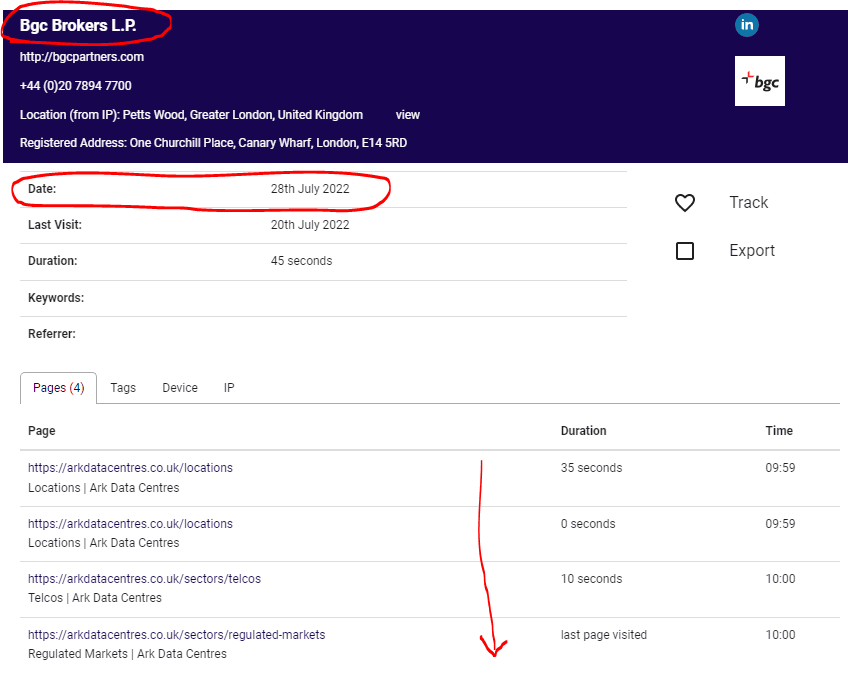

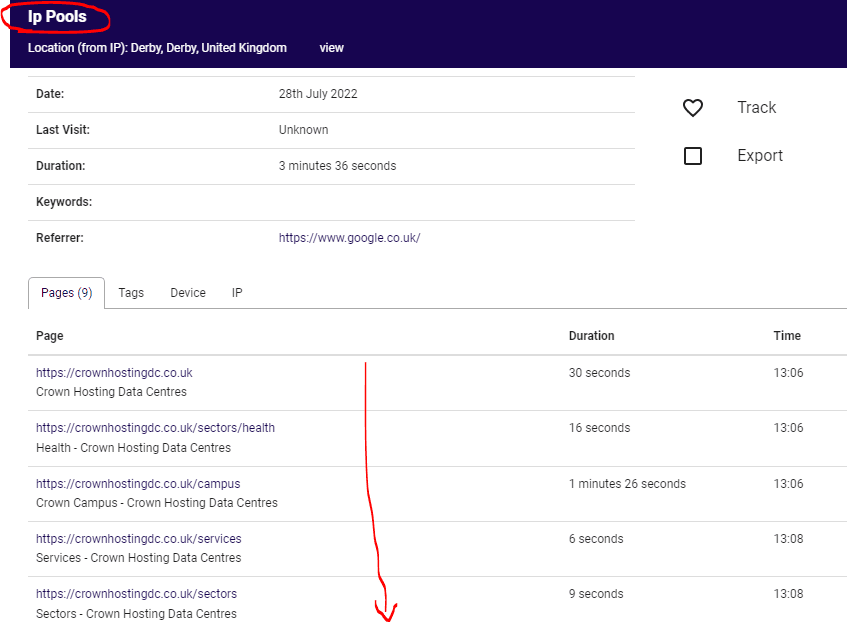
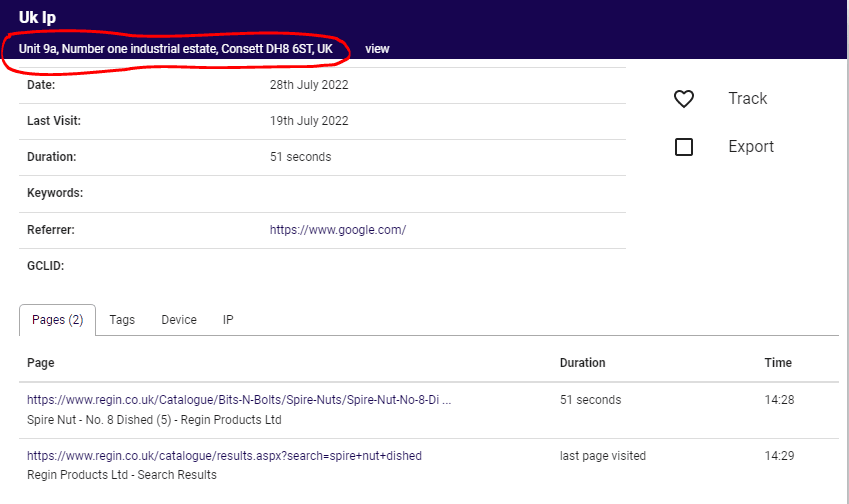
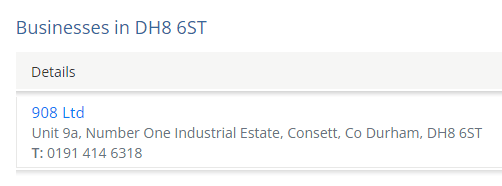
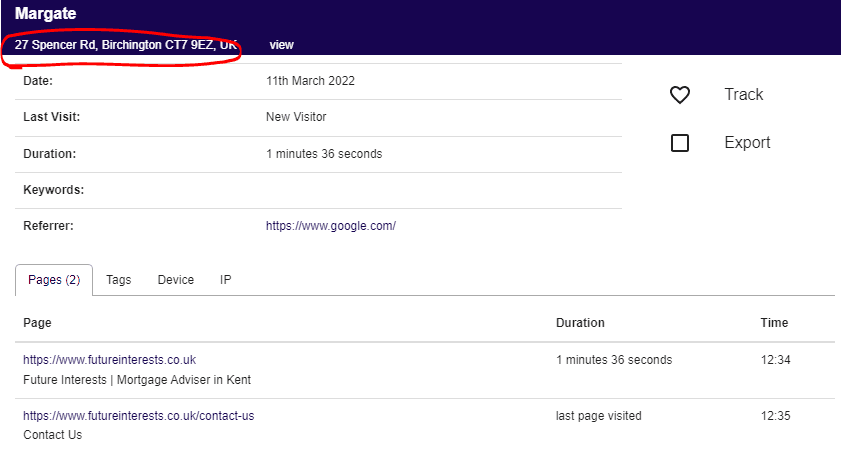




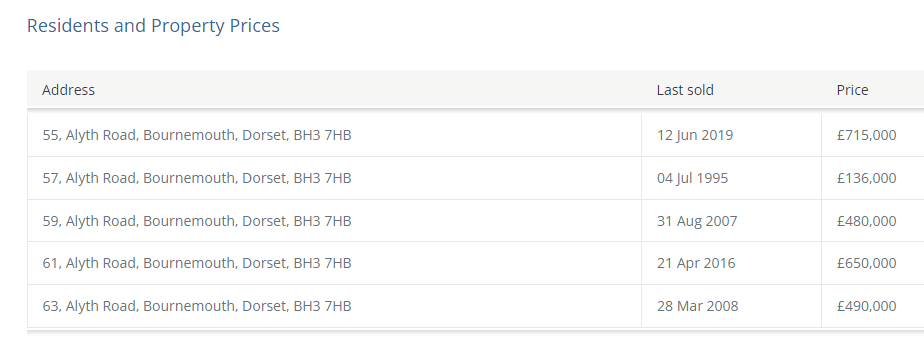
Leave a Reply